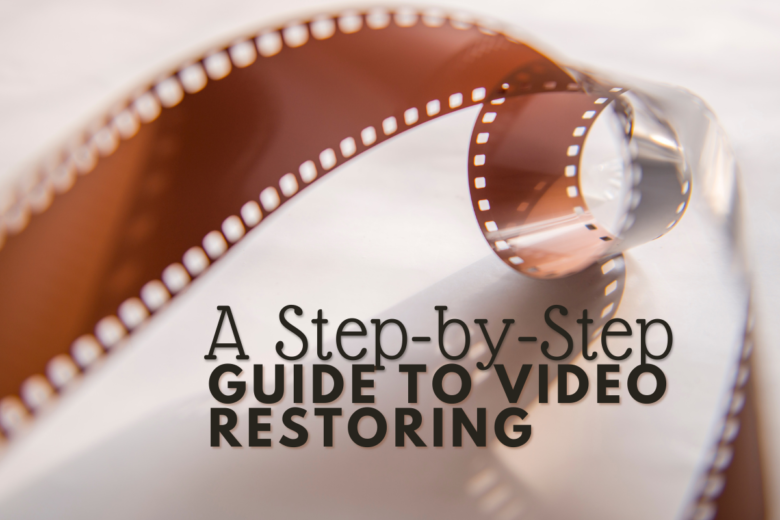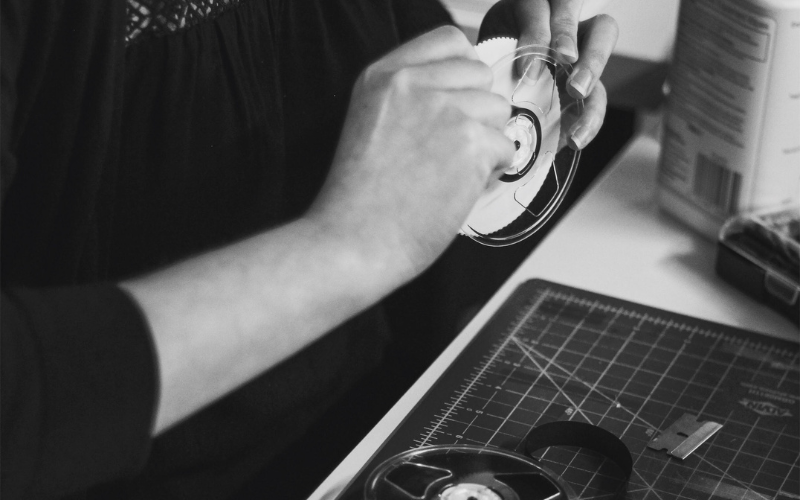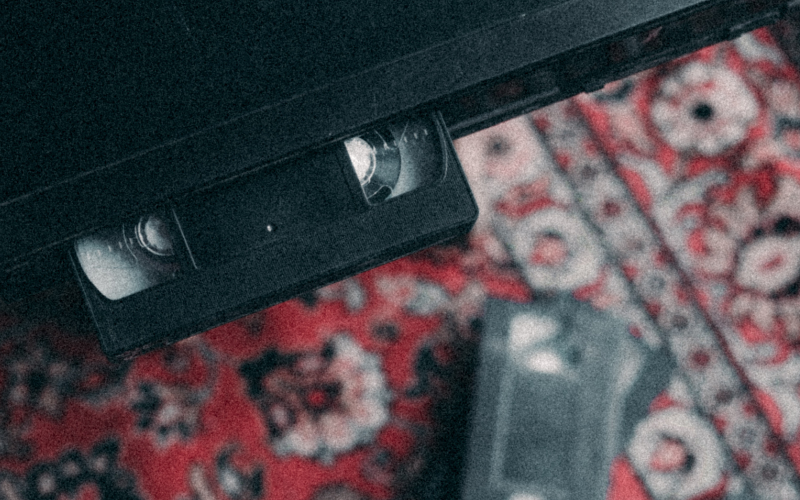What is Video Restoring and How Does It Work?
Have a huge collection of old VHS tapes or film rolls sitting at home? Wouldn’t it be nice to watch them again and relive the memories? Or, perhaps you are at the helm of an institution seeking to preserve important archives?
Whether you want to be able to relive old family memories or ensure important, historical footage is protected, converting old videos into a digital format is a smart move.
With that in mind, we’ve created this guide to video restoration so you can find out how the process works and the steps you need to take to restore video.
What is video restoration?
Video restoration is the process of restoring a poor quality VHS or camcorder recording to a higher quality digital video recording. The process is often used to salvage old footage, especially treasured family memories and historical footage.
The process of scanning the original source for conversion can take time to complete, especially when there is a large amount of material to be scanned. When converting from VHS, it can take hours to convert a single tape, and with multiple tapes, this has the potential to become a long and laborious process.
Once the process is complete, though, it can be edited using video software to further restore its quality.
The Importance of Digitizing Videos
Perhaps you have old home movies on VHS, 8mm, or Super8 film reels. These are the original digital format, which was designed to be played and viewed many times. Over the years, they degrade due to storage conditions, but also by exposure to light and magnetic fields. These factors can result in picture and sound quality issues. They also become more brittle and can actually break.
In addition to the deteriorating quality of your media, many of today’s televisions and monitors are not capable of playing these formats.
Digitizing your old home movies keeps them safe and well organized so that they can be enjoyed in the future, even if technology is no longer able to play the originals.

Reasons to Restore Old Family Videos
If your family has home movies dating back a few decades, you’ll want to transfer those videos from VHS cassette tape to a digital format to ensure these memories can be shared for years to come. Whether you have home movies from decades ago or more recent footage of a favorite family event, it’s important to preserve the film.
Keep in mind that VHS tapes degrade over time, so the quality of your transfer is going to be affected by how well-preserved the source material is. The experts at EverPresent can evaluate your tapes and consult you on whether they can be digitized. They’ll create a customized solution that allows you to archive your footage and preserve it for generations.
In summary, reasons to restore old home movies include:
- VHS tapes can contain valuable family memories you want to keep intact.
- You can share them with future generations through videos stored on your hard drive or via the cloud. .
- Videos can be converted to formats such as MP4 or DVD which make them easier to watch and easier to share with someone who doesn’t own a computer.
Reasons to Restore Old Archives
Put simply, restoring old archives is about restoring valuable information for the benefit of society.
Many institutions utilize video restoration so that content can remain available to the masses. By remembering the past, we can help share our culture and the future.
Restoring old archives is not only about saving information from disappearing but also about preserving historical evidence of the past. For example, by restoring war footage, it is possible to understand the kind of weapons used and how they affected people at that time.
When old archives are restored, it helps people, companies, and organizations document their history and preserve it for generations to come.
In summary, reasons to restore archival footage include:
- Preservation of fragile materials and deteriorated footage.
- Useful for historical research and cultural memory projects.
- Adds to the understanding of past and present.
- Preventing events from being lost and forgotten.
How Does Video Restoring Work?
The common misconception is that video restoration is easy, and all it takes is a click of a button. It doesn’t quite work that way.
In reality, video restoration is actually very complicated and requires a lot of trial and error. It takes a lot of practice and requires knowledge of visual effects in order to achieve high-quality results. And not all projects turn out as expected – some footage is just too damaged to be restored properly.
That said, let’s start with the first step of restoration, which is to convert the video to a digital format.
This process requires expensive hardware to convert the tape or film into a digital format. Often, this involves scanning a film frame-by-frame and recording it to a digital device. A meticulous conversion process is crucial, as artifacts like dust can be captured and show up in the final footage.
Film or tape with extensive damage needs to be repaired first. This requires the hands of a skilled film restorer. The process is quite complicated. As a result, it’s easier and cheaper to hire a conversion service like EverPresent to accomplish the task.
The EverPresent Process
When it comes to video restoration services, we’ve got you covered.
Video restoration can be an expensive and tedious process, but thanks to our team of experts, you don’t need to worry about spending a fortune or getting stuck doing it yourself. We simplify the process by taking care of everything – all you need to do is ship us your video tapes in any condition (and they don’t need to be intact) for a free evaluation. Moreover, if you’re in the northeast region, we have 40 local stores available for drop-off. We also have a pick-up service for projects. As you can see, we try to make it easy for you to use our reputable services.
Speaking of which, all of our video restoration services are designed to be affordable, efficient, and, most importantly, high quality. We have a team of experts who have been professionally restoring video tapes and film for years, so we know exactly what it takes to provide the best results for your project.
From the moment we receive your videotape, we take full responsibility for it – there’s no need for you to sign any documents or fill in any forms. We guarantee that all your digital files will be securely transferred to a hard drive, and the original tape will be returned uncut and in the same condition it was shipped.
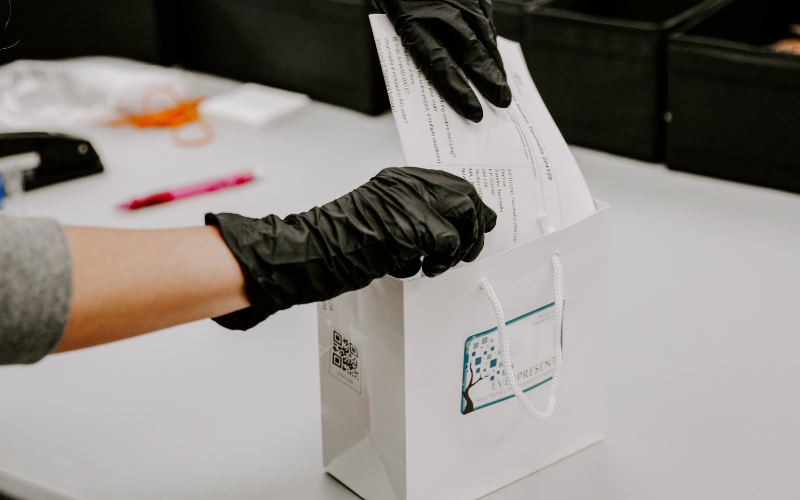
If you are trying to transfer a longer video that doesn’t fit on one tape, don’t worry – we can transfer multiple tapes onto one DVD as long as they were all produced by the same manufacturer. We can also copy films from 16mm film onto DVD if this is what you prefer.
In addition, if your video is damaged or broken, don’t worry! We can transfer the parts of the tape that make up your video as many times as necessary to produce a perfect-quality file.
We provide free advice on the condition of your tapes, so if you aren’t sure whether they are in good enough condition for us to work with, just give us a call. We can set up a consultation of your files to see if there is a good candidate for digitizing.
Video restoration is hard work and is by no means magic. It requires patience, lots of skill, and expensive hardware. That’s why the best approach is to rely on a premium video restoration service like EverPresent.
How to Restore Videos
Here are the steps needed to begin the video restoring process.
Step 1: Hire a video transfer and conversion service
The first critical step in tape restoration is to transfer the video from the tape and digitize it.
Old tapes are often in an analog format, such as VHS tapes or 16mm film rolls. However, your computer only understands digital files, so it won’t be able to “read” your old tapes. The only exception is if your video is in a digital format like CD or DVD.
Often, though, you need to digitize it first – or convert it into 1’s and 0’s – before you can restore old video tapes.
Unfortunately, converting your film or tapes to digital is something you can’t do at home unless you’re a video professional.
That’s because the conversion process requires specialized hardware and skills. This is especially true if the source material has visible damages that will affect the output, such as broken films, frayed edges, or moldy footage. Those require a special touch.
You need to hire a professional service like EverPresent to handle your conversion process.
The most important thing to look for is the variety of formats the service can handle. For instance, EverPresent can digitize VHS to digital, VHS-C, 8mm, Hi8, Digital8, MiniDV, HDMiniDV, DVCam, DVCPro, Betamax, Betacam, BetacamSP, Digibeta, Umatic broadcast tapes, PAL formats, SECAM formats – all in house.
In the rare situation that we can’t handle your tape or film, we can outsource it to a local archivist.
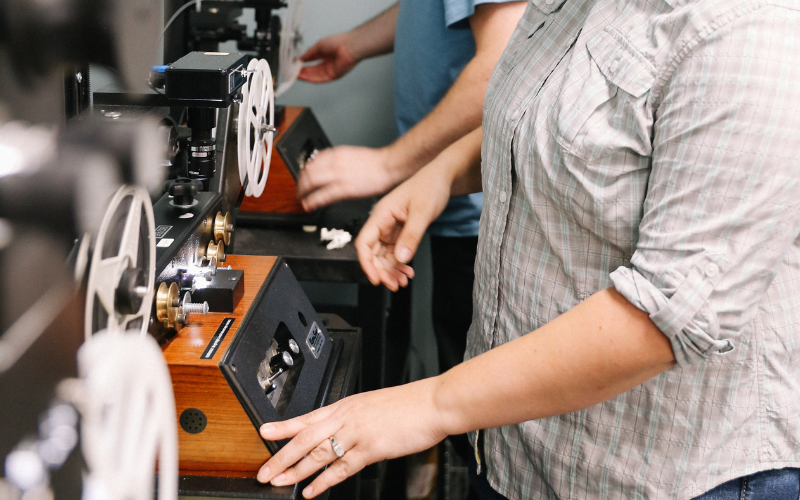
Step 2: Send the video files for conversion
Once EverPresent has your video files, the conversion process can begin. Generally, conversion takes around 2 – 3 weeks on average. We pride ourselves on the fact that 90% of our orders are completed within a month.
After the conversion is complete, you can choose how EverPresent will deliver the file to you. For restoring video, the ideal method is to let the company save it to a cloud server. That way, you can access it right away.
Alternatively, you can have us save it to a DVD or USB thumb drive. This allows you to keep and store physical copies of your video.
Step 3: Editing After the Video Transfer Process
Once videos have been digitized, many clients wonder if they are able to edit their videos. The answer? Of course, you can! The files that you receive from EverPresent are 100% yours. There is no copyright on the footage, so you are free to edit them however you please.
For straightforward video editing projects, you can typically use free online software to edit your videos. These free tools are ideal for clipping footage and can sometimes feature special effects. However, to make quality restoration updates, you often need to upgrade to the premium version of the software.
Fortunately, there’s no shortage of excellent video restoration tools in the market. Some good examples you can check out include DVDFab and AVCLabs. These tools also support automatic restoration. Videos can be converted with a simple click.
If you want more control, you can opt for more professional tools like Adobe Premiere or Vegas Video. These offer professional tools, although they require a steep learning curve.
Regardless of which software you choose, you will need to import your video files from your EverPresent-created DVD or download them from the cloud link provided to you. The DVD itself cannot be edited.
Of course, for more advanced editing, like color correction or resolution features, you are likely better off hiring someone who has made a career in video editing and has all of the resources and technology necessary at their disposal.
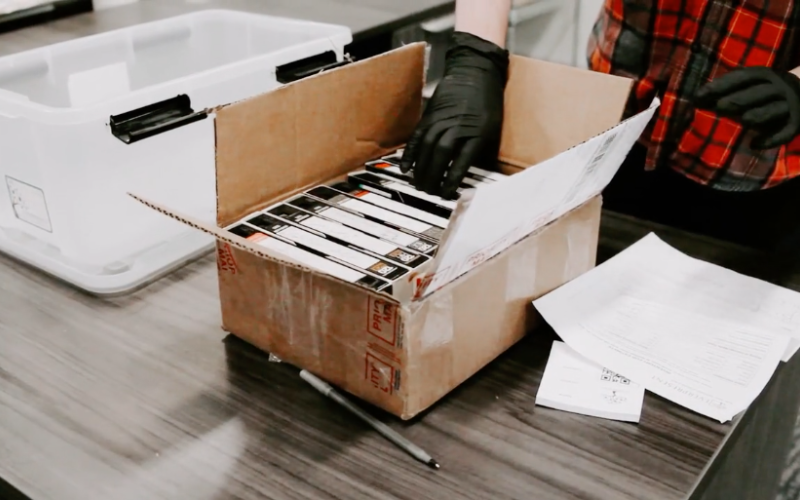
Transfer Your Tapes and Film with EverPresent
If you’re like most people, you keep your collection of old videos and films around because they are valuable to you.
Video restoration is a critical task to help you preserve your old footage, so that future generations can still enjoy it.
EverPresent can help you digitize your old home movies and photos or simply convert them from analog to digital. We offer a variety of services so that you can find the one that’s right for you.
We also organize digitized media into a central repository where you manage it, as well as provide cloud backup and storage for all of your media. This means protecting your memories in whatever form it takes for lifelong enjoyment.
Trust the best video transfer and conversion service in North America—EverPresent—to handle your important footage with care. We offer premium and fast video transfer services at competitive prices vs. national mail-in companies. While we are located in the Northeast, we cater to anyone living in the US. Just mail in your tapes, and we’ll do the rest.
Interested? Visit our website and fill out a form today to get started!

